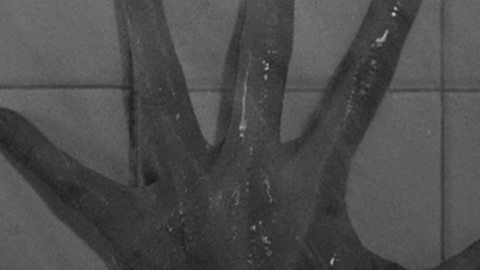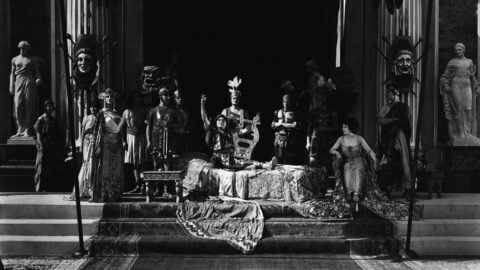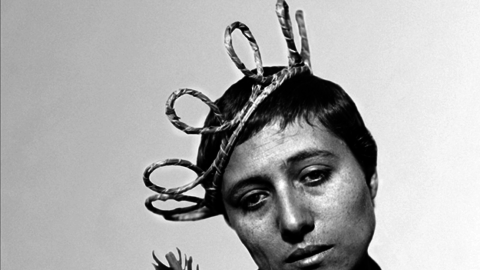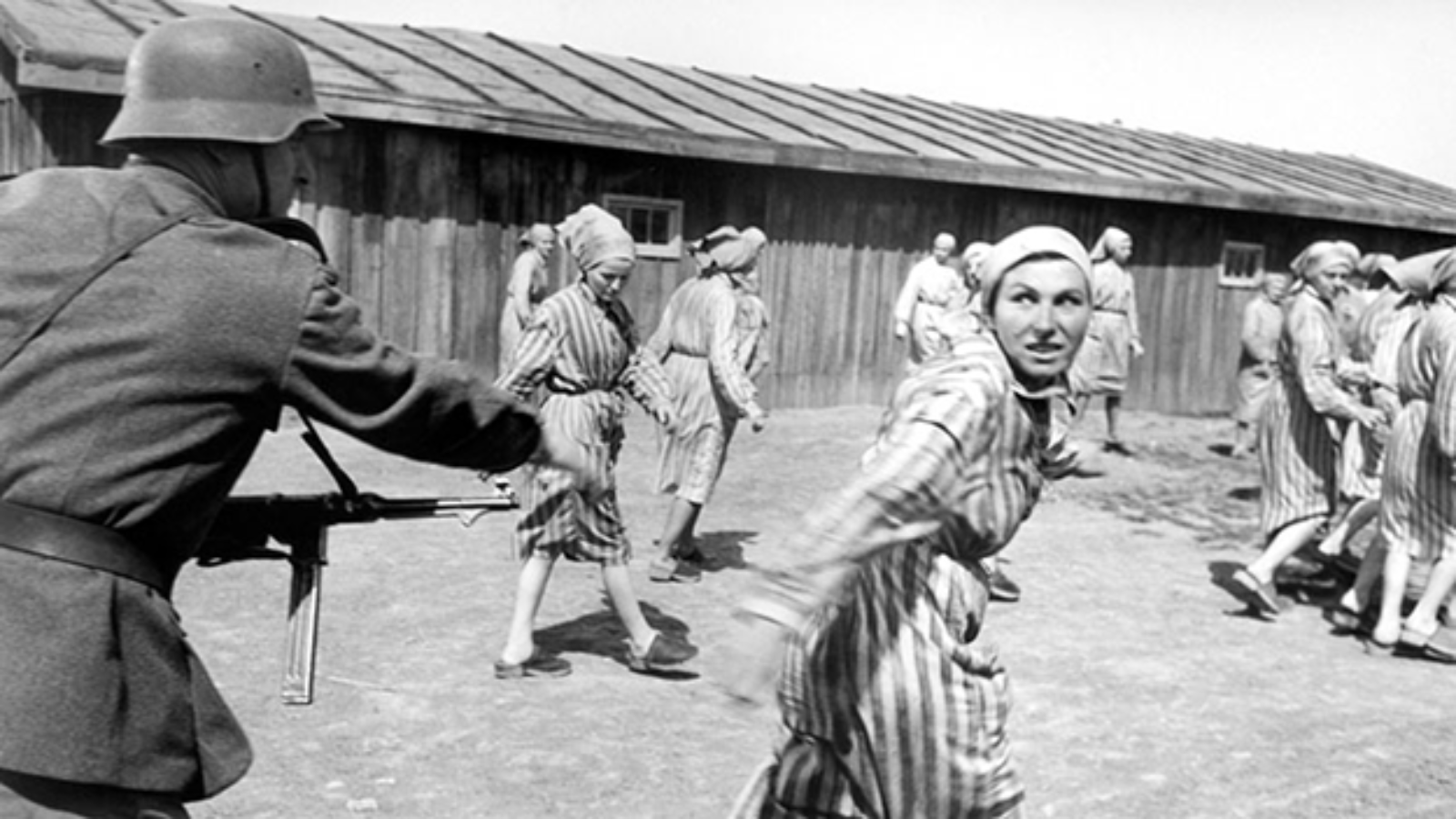
Game Changers: Camera Movement
In 1961, Jacques Rivette wrote a short Cahiers du Cinéma review of Gillo Pontecorvo’s Kapò (60), a grim Holocaust drama whose many horrors include the sight of a young concentration camp prisoner (Emmanuelle Riva) hurling herself fatally against an electrified fence. “The man who decides at this moment to employ a tracking shot to reframe the corpse from below, taking care to emphasize her raised hand within her carefully composed memorial image,” Rivette wrote, “deserves nothing but the most profound contempt.” Camera movement has deep and powerful roots—moral roots, as Godard would maintain—and it’s one of the things that makes film an art. The Lumières were probably the first to experiment with affixing the camera to an object in motion, and the resulting shot from a moving train in Liverpool in 1897 helped clarify what set filmmaking apart from the other arts. A moving camera allowed for dynamic visual composition over time. When I started making films, directors and DPs had eyepiece-style viewfinders. The cinematographer and I would walk around using the viewfinders during blocking rehearsals: circling the actors, standing up, lying down, watching space rearrange itself in the floating rectangle in front of our eyes. Afterward, we’d turn to each other, compare what we saw, then do it again.

There are two types of camera movement: motivated and unmotivated. Motivated camera movements are direct responses to the action on screen: you move, I follow you. A character walks across the room and the camera tilts, pans, or physically moves by hand or on tracks. Unmotivated camera moves are used for emphasis of one kind or another, be it emotional or supernatural, by the storyteller. You stand still, I approach—that’s unmotivated. There are two types of unmotivated camera movement. One is logical. A character is doing something—brandishing a small object, making a gesture, displaying a look of heightened emotion— and it’s important that we see it, so the camera moves in to get a closer look. The camera is doing what the viewer wants or needs it to do. And if emotion is building in that character, the camera gets closer. Logical.
Then there is illogical unmotivated camera movement. This occurs when the storyteller imposes himself on the story, when the camera calls attention to itself. Many people don’t care for this type of movement. Recently, I read an interview with a DP who said that “the best directors and cinematographers utilize camera movement to tell the story and never move the camera arbitrarily.” Unmotivated camera movement, for him, “feels unnatural and artificial—and at worst, it doesn’t help tell the story.” Bullshit. The unmotivated camera is wonderful.
When a camera move is imposed on the action rather than just following or accenting it, something very interesting happens. The Conformist (70) is a film full of unmotivated and beautiful camera movements. When the Fascist handler who supervises the Jean-Louis Trintignant character paces back and forth in a park, the camera moves with him. But after he sits down on a bench, the camera slides over to a tree blocking our view of him. In the next shot, as Trintignant heads down a corridor, the camera retreats in the other direction. Two remarkable examples of illogical unmotivated camera. “Unmotivated” simply means that the camera frame reflects the director’s point of view first and the characters and narrative action second. Camera movement is motivated by the storyteller not the story. In The Conformist Bertolucci melds Visconti’s pictorialism with Godard’s willfulness.
When I was in film school, there used to be all these rules about continuity, such as not crossing the eyeline. In today’s cinema, there really are no rules. Or maybe there is only one: whatever works. You can do anything. If it works, you’ve created a new rule. As I’ve said before, the innovators who make the rules are often the first to break them. Their followers are stuck with rules while the creators are running free. These moments in The Conformist are examples of what I think is most interesting and powerful about camera movement, a technique that came of age in the Nouvelle Vague.
Godard’s notion was that even if there are only two people in a scene, there is a third person in the room, watching them: the camera. His innovation was to make the camera’s perspective just as valid as that of its subjects. “I’m watching this scene,” you can hear him say, “and if I get bored, I just may turn over here to look at something else. If the scene gets interesting again, I may come back and watch it again. I’m part of the story.” Godard’s line of thinking goes back, in a way, to D.W. Griffith. In The Country Doctor (1909), a one-reeler about a doctor torn between the needs of his sick daughter and his duty to come to the aid of a gravely ill farm girl, Griffith opens with a landscape and pans to the doctor and his family exiting their home. He concludes the film with a corresponding pan away from the front of the doctor’s house across the landscape of what is now south of Rye, as if to take in the whole world. This is a very atypical move for Griffith. It’s suited to the movie’s philosophy—each of the surrounding homes contains its own drama, its own film waiting to be made—but it’s not motivated by the story or the characters. If anything, it’s motivated by the storyteller’s need to make a point above and beyond the content of the movie’s plot.
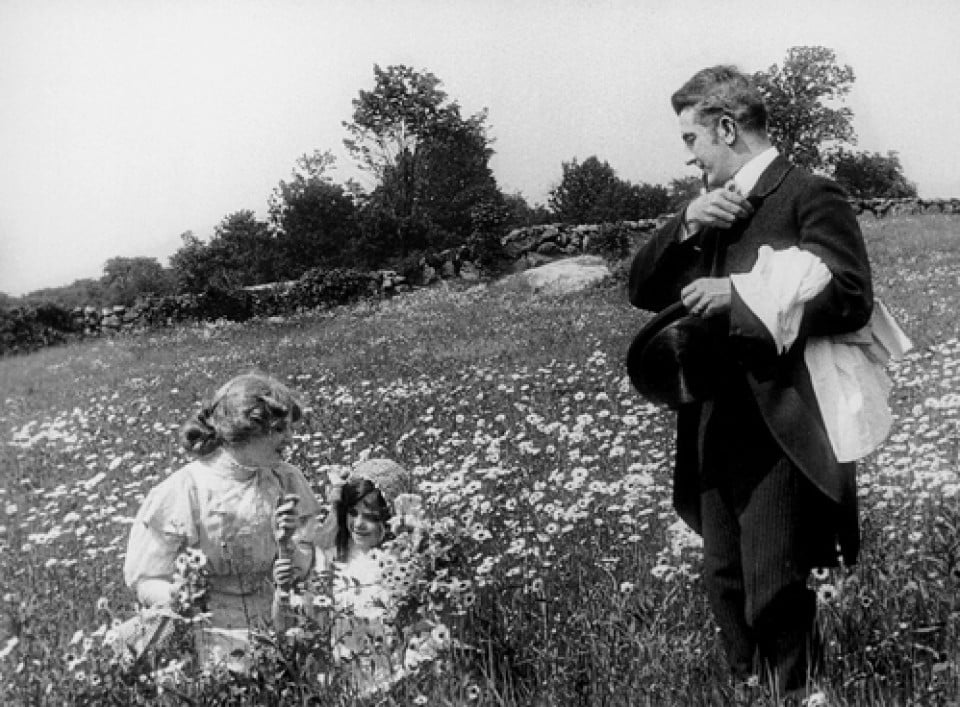
The Country Doctor
Giovanni Pastrone’s Cabiria (1914), a hugely influential epic, was the first film in which the camera moves without tracking the action of the characters. It just starts drifting. Pastrone had built a device—basically a big cart—and simply started moving it. (In Hollywood after the film’s release, arbitrary extended moving camera shots were called “Cabiria shots.”) Griffith had to outdo the Italians. For the introductory wide shot of Babylon in Intolerance, he built a counterbalanced elevator that looked like a siege tower and sat with his camera at the top. As the grips pushed the tower forward, the camera descended on an elevator. It was the first crane shot, combining a logical camera move—moving in to see more detail—with an unmotivated one: dropping down to delineate the space.
Camera movements involve a shift in the movie’s plane of focus. Every lens has a certain depth of focus and the longer the lens, the shorter the depth. It may be fivefeet deep, it may be five inches, but there is a defined plane of focus. When a camera with a fixed lens moves, it not only approaches the subject, it also continuously shifts the plane of focus along the way. The focal plane is literally moving through space. It’s a very subtle shift, but you sense that you are moving through space with it. Movies are compositions in time. A moving plane of focus defines time through space. That’s why zoom-ins as opposed to tracking shots feel synthetic; the image simply enlarges without any basis in physical movement.
The shifting focal plane makes camera movement dynamic, but it also creates difficulties. Before the introduction of the reflex camera in the Fifties, the camera operator was looking through a calibrated parallax box alongside the camera, not through the lens itself. He didn’t know when the image went out of focus. It was all by the numbers: measuring camera distance in feet and racking focus. In the legendary dolly shot 19 minutes into Stagecoach (39), Ford comes in low and tilts up to John Wayne—the birth of the “cowboy angle.” In the middle of the shot, he buzzes (or briefly loses) focus. Of course, Ford didn’t know that until he saw the shot in the dailies screening room, when it was too late.
Near the end of the silent period, Marcel L’Herbier hired Jean Dréville to document the filming of his stock-market epic L’Argent (28). In my favorite scene from Dréville’s film, Autour de l’Argent (29)— quite possibly the first behind-the-scenes documentary ever made—L’Herbier experiments with a handheld moving camera for a scene in the map room. At first, it doesn’t work. The next day they come back with a handheld camera on a four-wheeled platform. It’s like watching cinema being born.
Handheld camera technique, in fact, arrived relatively late in the development of camera movement. Initially, the camera was impossible to handle; it was so heavy that it had to be mounted, and you had to crank it while you were holding it. Even after motorized cameras came on the scene, handheld wasn’t popular until the late Fifties. L’Herbier’s four-wheeled handheld final shot looks wobbly because they didn’t have the technology to balance the camera. Smoothness makes shots like that sing. A year or two before L’Herbier shot L’Argent, F.W. Murnau came to Hollywood and had the full resources of 20th Century Fox placed at his disposal. Fox owned a lot of advanced camera equipment. For his American debut, Sunrise (27), Fox gave Murnau an astounding amount of money—the highest sum yet budgeted to a filmmaker for a single film aside from Ben-Hur (25). Since these were the days before wide-angle lenses, they built sets with false perspectives. They built a railway about a mile long from the city sets to the farm sets. For what subsequently became one of the film’s most famous shots, they built an elevated platform on which the camera could move back and forth while the film’s unnamed male lead— George O’Brien as “The Man”—walked through the marshes.
At one point, the camera pans away from The Man, taking on his perspective as he goes through the reeds and sees the seductive “woman from the city” he’s been walking to meet. It was a bold departure: the first dynamic use of the “moving point of view” shot. I walk toward you, you pan from my face—and now you’re seeing through my eyes. I’m also a big fan of the blind-side moving point of view: someone walks away from someone else, and you cut to the receding point of view, as if the character walking away had eyes in the back of his head. That is a good example of an unmotivated, illogical camera move. I started doing them on American Gigolo in 1980.
Sunrise was an expensive commercial failure, but it led Hollywood to appreciate cinematography as a stand-alone art form. This part of the story, I read about in books. The Steadicam and the Louma (a type of crane), on the other hand, arrived during my working life.
Garrett Brown, who created the Steadicam in the mid-Seventies (he would later design the SkyCam, the camera supended on wires used in football games), described it as “the original handheld stabilizing system.” Essentially, it’s a counterbalance system, but one that’s positioned right next to the operator’s body. The camera floats just as it floats on a crane. The first use of the Steadicam that wowed me was a shot of Dustin Hoffman running during the opening credits of Marathon Man (76). It’s the simplest shot in the world to do today. But that was the first time such a running shot could be achieved.
The operator on that shot was Brown. At the time, if you wanted to shoot a Steadicam shot, you had to use his camera and you had to use him. If there wasn’t a burst of Steadicam films right away, it was because Brown could only do one film at a time; you’d have to book him way in advance. Brown had already teamed up with cinematographer Haskell Wexler on Hal Ashby’s Bound for Glory (76). Together, they created what’s widely considered the first Steadicam shot: an imitation, in reverse of a virtuosic handheld shot from Mikhail Kalatozov’s The Cranes Are Flying (57). In that film, the camera starts on a bus and moves into the street. At the end of the shot, the operator gets into the “bucket” of a crane—a seat placed where the camera mount usually is—and the camera lurches up into the air. Ashby, Wexler, and Brown were able to start their sequence—a tracking shot of David Carradine, playing Woody Guthrie, walking through a crowded migrant-worker camp—in the bucket. Once the crane came down, the operator got off the Steadicam and moved forward, tailing Carradine as he weaves through the crowd.
One film became the defining moment for the Steadicam, the moment when it fully became a creative tool. In 1978, Brown went out of commission for a whole year. Stanley Kubrick had flown him in to a soundstage outside London to shoot what would eventually become The Shining. Brown regarded Kubrick as the first person to really understand what the Steadicam could do: rather than just allowing for little tricks and embellishments, the Steadicam could create a world of its own.
https://www.youtube.com/watch?v=cy7ztJ3NUMI
One of Kubrick’s many innovations in The Shining was to find a sound design pattern for each of his Steadicam shots that would combine perfectly with the movement of the camera. When Danny peddles through the Overlook Hotel on his threewheeler, he keeps going off the carpet and hitting the linoleum. Every time the surface changes, there’s a jarring sonic shift. It’s a brilliant example of the use of sound and image to create a compelling rhythm.
The Steadicam allows directors to film scenes in elaborate single takes. With the advent of digital photography, the possibilities for what the French called “plan séquences” have become even greater. At the 2013 Venice Film Festival there were three single-take films. The best of these, Iranian filmmaker Shahram Mokri’s Fish & Cat, is a 140-minute Steadicam single take using about 20 actors and 10 locations, only two of them indoors. There are no cuts. And it works. After 30 days of rehearsal, they got it on the second attempt. It is the apotheosis of the long-take movement, following on from Timecode (00) and Russian Ark (02). The “whose take is longer, yours or mine?” competition was officially over.
The crane, which started as a toy, became a tool, then became superfluous with the advent of the Louma (aka “cam-remote,” “hot head,” or “technocrane”). Designed in France by Jean-Marie Lavalou, Alain Masseron, and David Samuelson, the Louma is a remote-controlled crane. The operator does not need to sit on the crane itself. The camera head can go almost anywhere and point in any direction. If an operator is sitting on a traditional crane and the camera points straight down, he’s going to fall off. A Louma can also become a free-axis camera, which means it can spin and rotate. With the remotecontrolled camera, you can do all kinds of shots that were once impossible.
A proto-Louma shot can be seen in I Am Cuba (64), in which Kalatozov attempts all kinds of experiments, such as shooting with infrared film. In one now famous shot, a camera suspended on wires descends from a rooftop bikini contest to a swimming-pool terrace before being submerged in the pool. After the camera goes out the window, it’s unmanned. They had to tape over the viewfinder so that no light could get in and then stabilize the camera so that it moved at a certain pace.
The first time the Louma shows up is in the credit sequence of Roman Polanski’s The Tenant (76), in which the camera spirals down along the courtyard walls of an old Parisian apartment building. In the past, if a director had wanted to do a shot like that, he would have had to build the set to order. Spielberg was the first person to use the Louma in the U.S., on 1941 (79). There was only one of them in existence at the time, but Spielberg had a lot of money and he paid the Louma people to come for the entire shoot. At that time, it was housed in a semitruck. Made up of around 40 or 50 pieces, it took a day to assemble. Spielberg used the Louma primarily to do the kinds of shots L’Herbier and Busby Berkeley attempted: to position and move the camera over the heads of dancers. To arrive at that kind of an angle, they had to invent massive rigs. With the Louma, it was far simpler.
For me, it was Wings of Desire (87) that first made the Louma into a creative tool rather than a toy. Wim Wenders came back to Berlin to rediscover the German language after working in Los Angeles for about 10 years. Reading Rilke and walking around Berlin, he started to think about centering a film on a peripatetic character—a mailman or a fireman, initially—whose movements would traverse the whole city. Then he had the idea to tell the story through a pair of guardian angels. For this, the Louma was perfect. Wenders used it to float above people, descend to their level, and drift around them. To my eyes, the film wouldn’t have been possible without a remote-controlled crane.
When Wenders first tried to use the Louma on The American Friend (77), it had been a nightmare. The technology, he later confessed, really wasn’t there yet; they lost the light trying to get the crane to work right. It ended up with the Louma people yelling at each other on set, and eventually they threw in the towel. Sometimes you have the perfect tool, but you just can’t get it to work.



